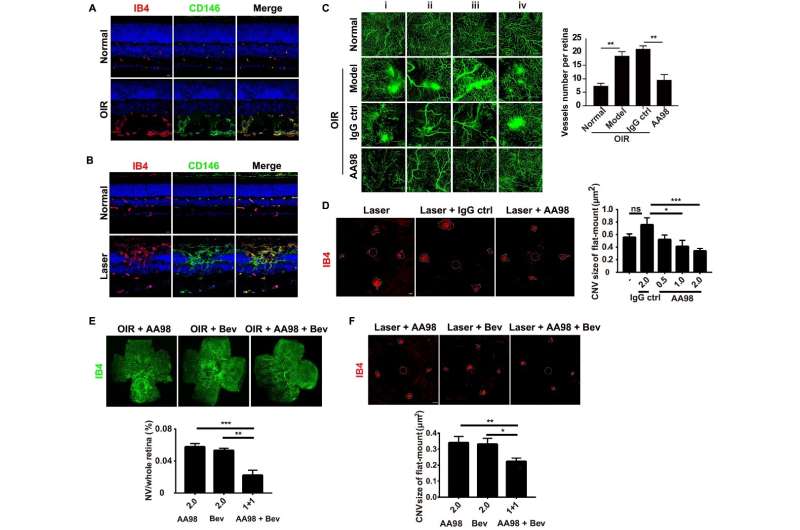
Blinding diseases seriously affect quality of life. Retinal and choroidal diseases are common blinding eye diseases with complicated pathogenesis that highly damage visual function. The key factor regulating retinal angiogenesis and vessel maturity is oxygen. Hypoxic conditions induce HIF1α activation, followed by VEGF expression. At present, intravitreal drugs that inhibit the VEGF pathway, including bevacizumab, ranibizumab, and aflibercept, are the most widely used therapies and can stabilize disease progression, prevent progressive vision loss, and even restore vision. However, some incomplete responses to anti-VEGF therapy still trouble thousands of patients, such as persistent fluid exudation, unresolved or even new hemorrhage, progressive lesion fibrosis, and suboptimal vision recovery. Therefore, new treatment strategies need to be explored.
“we found CD146 expression was widely upregulated in the retina and linked to retinal neovascularization in laser-induced CNV (choriodal neovascularization) model and OIR (oxygen-induced retinopathy) model”, said Bai Xue, the first author for this work. The adhesion molecule CD146 has been reported to be involved in physiological and tumor angiogenesis, therefore the results of this research indicated that anti-CD146 may be a potential therapeutic strategy for angiogenesis-associated diseases. “Knockdown of CD146 or blockade of CD146 by the AA98 mAb in human retinal endothelial cells (HRECs) and human umbilical endothelial cells (HUVECs) impaired hypoxia-induced cell migration and tube formation, which further confirming our hypothesis”, said Dr. Hongxia Duan, who headed the study. Based on these preliminary results, the researchers conducted the further in vivo experiments to test the therapeutic effect. “we observed reduced neovascularization in the retinas of endothelial Cd146-knockout (Cd146EC-KO) OIR mice, and anti-CD146 AA98 significantly inhibited abnormal angiogenesis under hypoxic conditions such as laser-induced AMD mouse model and OIR mouse model”, “interestingly, combining anti-CD146 mAb and anti-VEGF mAb had a better therapeutic effect than anti-VEGF alone”, said Duan.
In conclusion, this study indicates that targeting CD146, an angiogenic factor, could be an additional strategy for classical neovascularization retinopathy therapy, and targeting CD146 and VEGF together could present a more efficient approach than current therapies.
Source: Read Full Article





